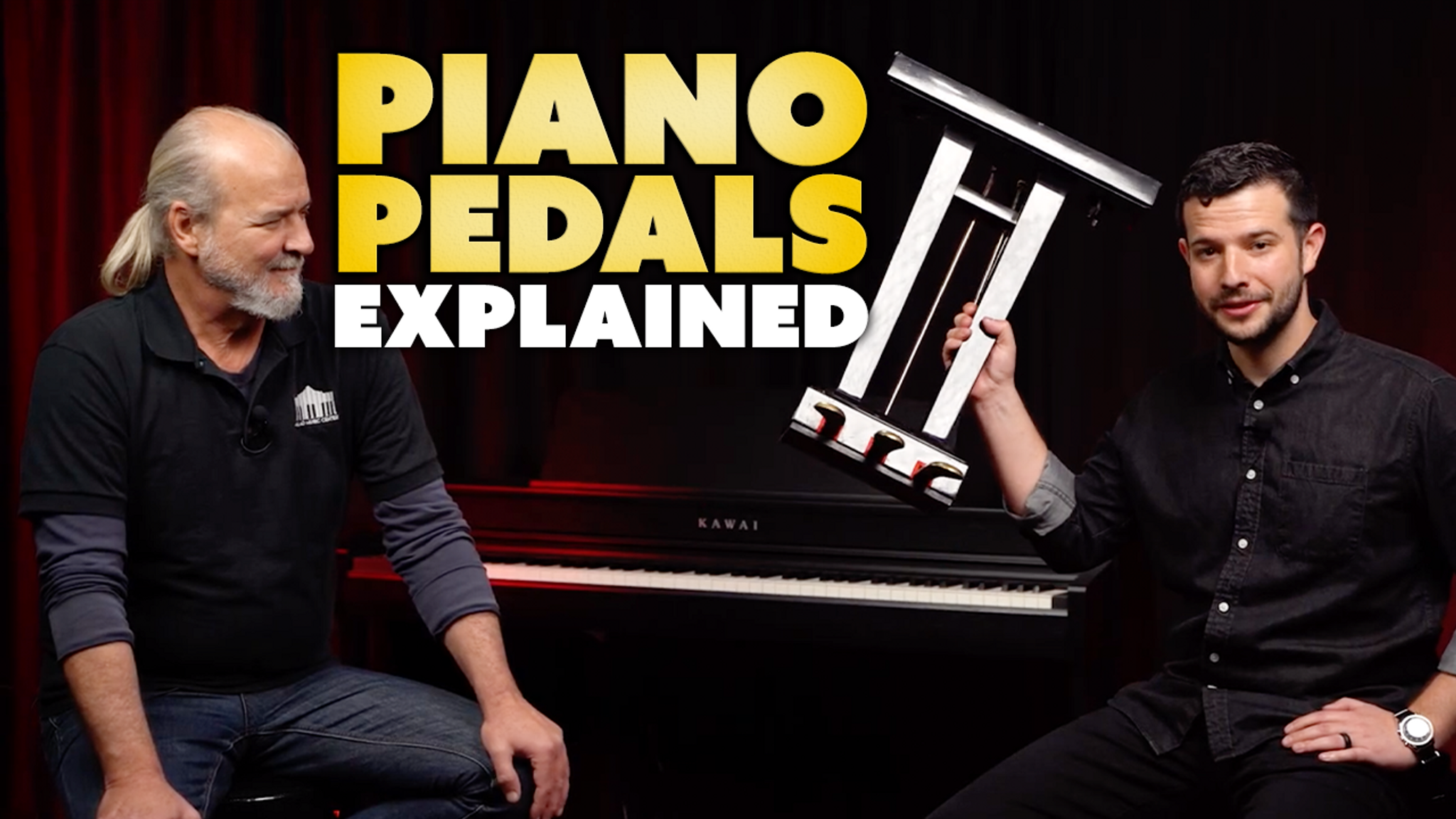
Piano Pedals Explained | Kawai St. Louis Piano Showroom
The sounds that you create when you play piano are not only limited to what you do with your hands and fingers. Modern acoustic or digital pianos will usually come with three pedals and older acoustic pianos usually have two pedals. Beginner pianists don't really use the pedals but as players advance, they come to use them all the time. Most commonly used is the Sustain pedal (right), followed by the Soft pedal aka “una corda pedal” (left), The Sostenuto pedal (middle) is found on newer pianos and some older pianos replace it with a bass sustain pedal that sustains only the lower (“bass”) notes. Still, other pianos have a practice pedal (aka “celeste pedal”) that softens the notes even quieter than a soft pedal. We get the question all the time, what are the pedals on a piano for?
Types of pedals on a piano
Modern acoustic or digital pianos will usually come with three pedals. You will find older acoustic pianos have two pedals. Here we explain the effect that each has on the sound and the proper technique for using them.

Sustain pedal (right)
When playing an acoustic piano and a finger is taken away from a key, a “damper” pad stops the note from ringing out. When the sustain pedal is pressed, it removes the dampers from the strings, allowing notes to ring out for longer, even when the keys are not held down anymore. That’s why it is also called sometimes called the “damper” pedal.

Soft pedal aka “una corda pedal” (left)
Most strings in an acoustic piano are in groups of threes, with each group tuned to the same note. When played normally, the hammer strikes all three at the same time giving each note a full, bright sound. On a grand piano, the una corda pedal shifts the entire action mechanism to the right, so the hammer only hits two of the three strings.
The resulting note is softer. Also, since the strings are hit by a different part of the hammer that has fresher felt, the sound is muted and less bright. On older pianos the hammer would only hit one of the three strings, hence “Una corda” meaning “one string”. On upright pianos, pushing the pedal moves the hammer mechanism closer to the string, making it softer but without altering the number of strings hit.
Sostenuto pedal (middle)
Similar to a sustain pedal, the key difference here is that the sostenuto pedal only holds notes that are already being played at the exact moment when the pedal is pressed down. Any notes that are played after the pedal is down are not affected by the sostenuto, allowing for selective sustain without blurring the sound.
Since the sostenuto pedal is a relatively recent addition to the piano, it is rarely required for pieces before the late 20th century.
Other functions of the third pedal
The middle pedal is not included on older pianos and even if your piano does have three pedals, the middle pedal may not be a sostenuto pedal. Some pianos replace the middle pedal with a bass sustain pedal that sustains only the lower (“bass”) notes. Other pianos have a practice pedal (aka “celeste pedal”) that softens the notes even quieter than a soft pedal. They often have a locking mechanism so you can practice without bothering people quite so much.
